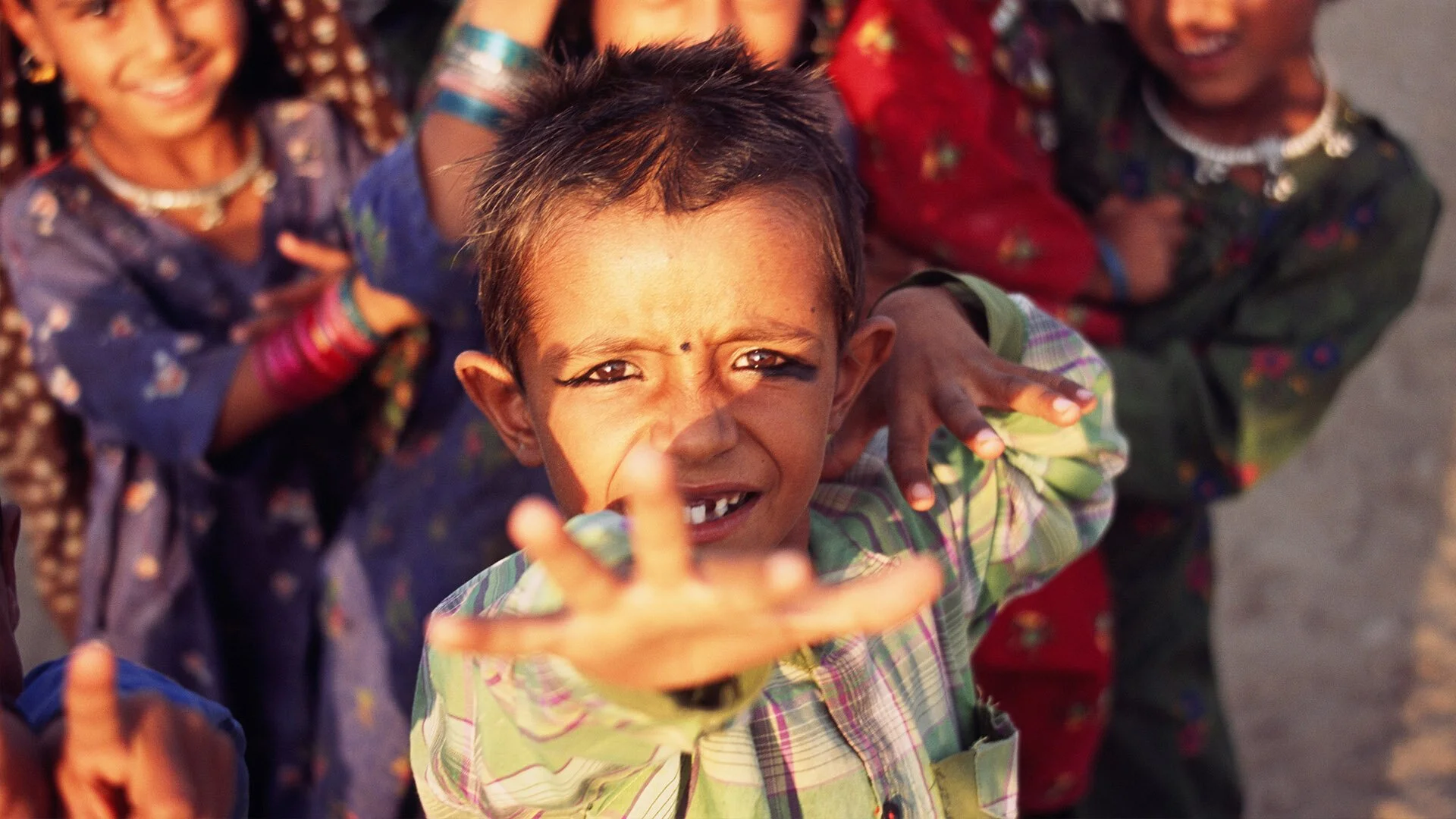The Explorer
John Macdonald is an explorer.
His wanderlust has taken him on one adventure after another for the past two decades—journeys that include sitting in the seat of a Land Rover staring down a cheetah in Masai Mara, trekking to remote hill tribes in Laos, riding a camel hundreds of miles through the Thar Desert, taking cooking classes in Chiang Mai, studying Tango in Buenos Aires, exploring the rainforests in Borneo and hitch hiking on sailboats in the South West Caribbean.
Most people go on a one-week honeymoon after getting married. John went on a three-year trip around the world with his wife, Cara, during which they made videos for Lonely Planet to fund their journey. John also captured some of the most striking moments of his journey in photos and later created books about the various regions.
John’s open-minded and adventurous spirit naturally carries over to his approach to teaching and his innovative methods of curriculum design. His classroom buzzes with students working on self-paced projects, where they often learn math and physics through applied, hands-on projects. His “flipped” classroom model allows students to study math at a speed that suits their interest and ability. Instead of teaching new concepts once in class, John has developed an entire course of online video lessons where a cartoon character named Mac guides students through the world of geometry. His students become active learners whose journey in the class resembles that of an explorer more than a student.
John’s most recent adventure was a National Geographic Educators Certificate. This fall, he completed a prestigious certification through National Geographic that provided him one more opportunity to inspire students through experiences and to bring to life the content studied in class.
We sat down with John this week to learn more about his most recent intellectual journey.
What was your objective with the Golden Ration Project?
The main objective in this project is to inspire and spark a curiosity for learning about mathematics, to allow students to discover for themselves that mathematics is wondrous and is all around them both in their manmade and natural worlds, and to pursue creative projects based on their inspiration and curiosity.
Tell us more about the project itself.
Students saw how the Fibonacci sequence and the golden ratio are ubiquitous in the natural world and are apart of nature's genetic code. They were introduced to phyllotaxis, the arrangement of leaves on a plant stem, and how the golden ratio is used in nature to maximize sunlight and water on a plant. They designed their own leaf on paper.
Students then made a pentagram construction, which embodies the golden ratio proportions. From this constructions they designed and built golden ratio calipers. Students then used their calipers to test and then sketched various objects around in the natural and man made worlds such as Renaissance art, company logos, body parts, spiraling plants and insects.
The walls outside of the Student Success Center are covered with interesting student work related to this project. What was the final project and what type of work did students do?
In part IV, students used the ideas and concepts learned from the first four parts of this project to create their own Fibonacci/golden ratio work. Some students work includes: a unique logo or graphic design in SketchUp and then printed them with a 3D printer, a graphic design burned into wood, a Fibonacci spiral by sewing squares into quilt, a cartoon character animated in Adobe Photoshop, origami phyllotaxis flowers, a low carbon environmental house made in SketchUp, and a space needle made in SketchUp and printed with a 3D printer. Students reflected on their project work weekly and presented their work after four weeks. They wrote a short piece on how their final project was inspired by the Golden Ratio/Fibonacci and used several pieces from the discovery activities as artifacts to show the inspired connections.
What was most rewarding about the National Geographic project?
The most valuable part of this experience was rethinking an old plan and expanding it to not include more from the National Geographic Framework but to also broaden the perspectives on Teaching About the World. Having the framing work push me, allowed me to offer a richer and deeper experience for my students. It was necessary for me to reach out to my colleagues in other disciplines to garner their expertise and ideas to create a more cross curricular project. It took a ton of work to put together this project and hopefully the next time I do it with my students it will be even better with the lessons I learned.
Another valuable part of the experience for me was seeing the ideas and work of my National Geographic colleagues. It definitely inspired me to do better work.



